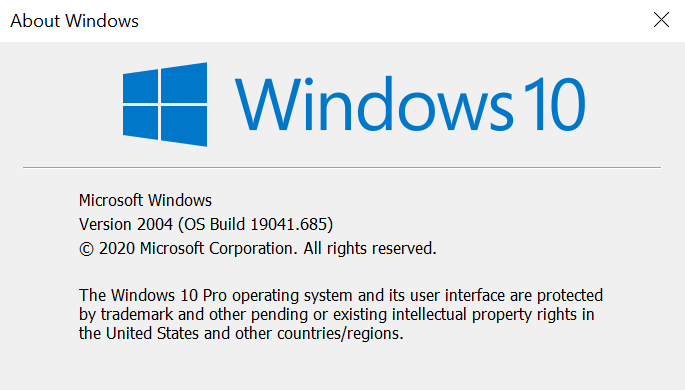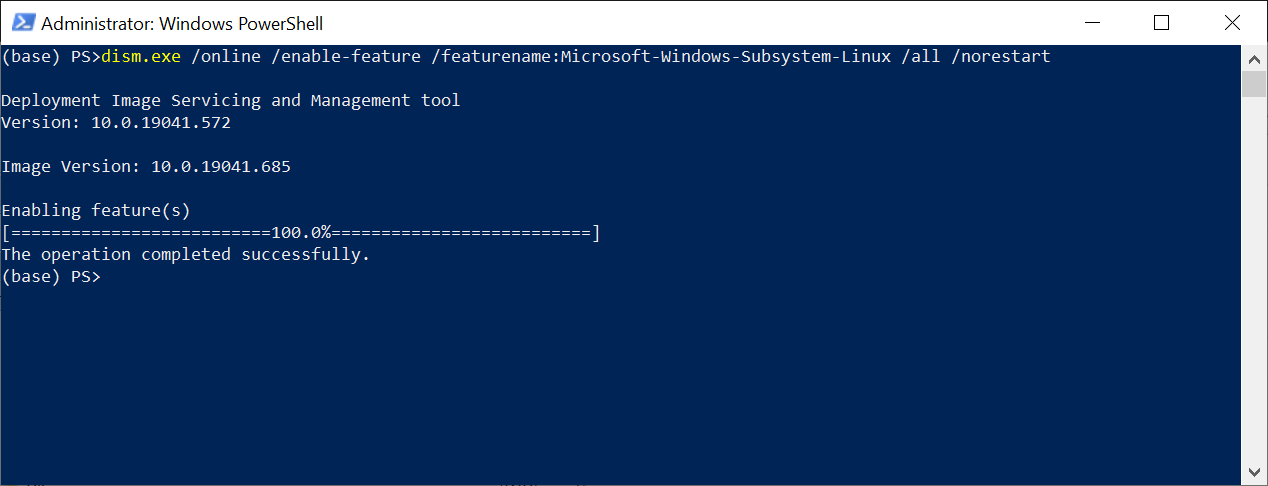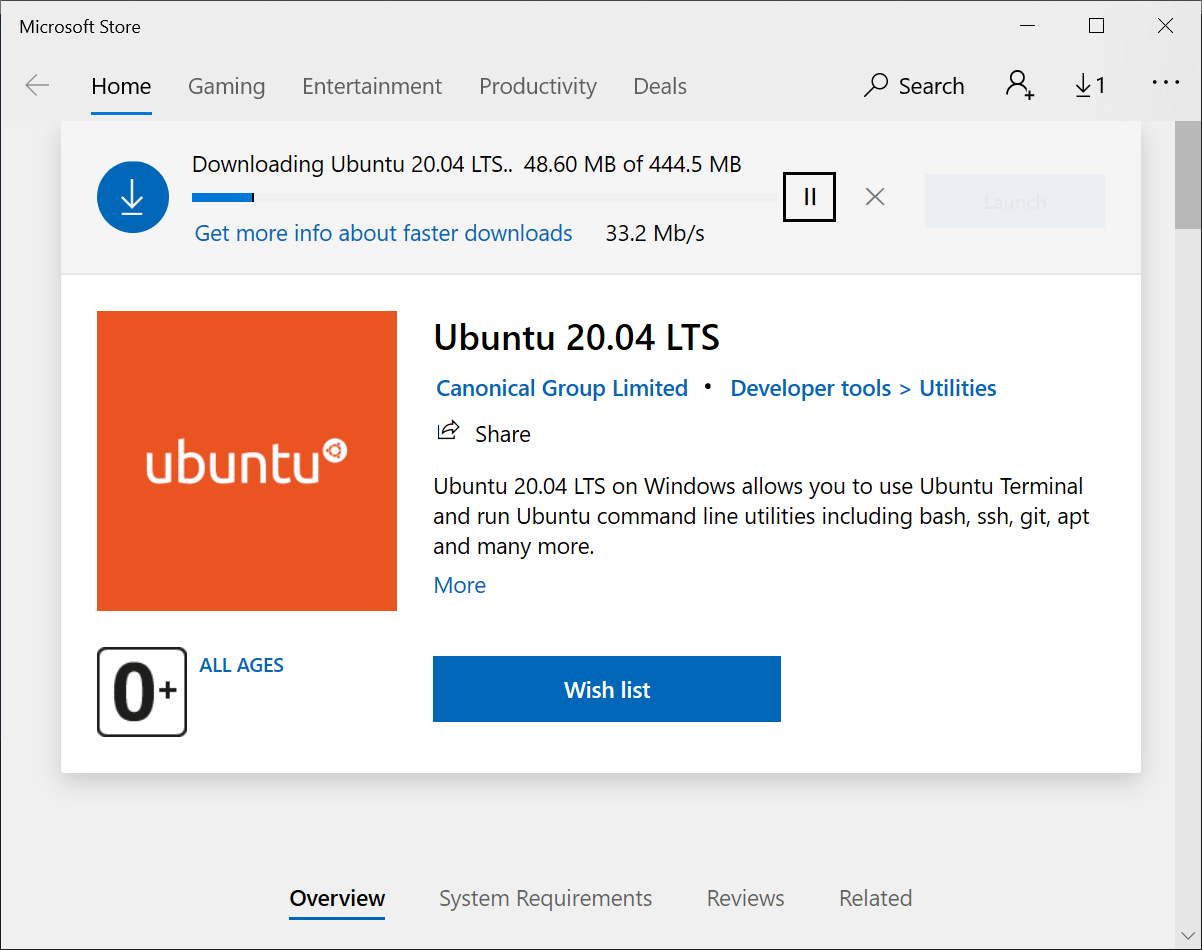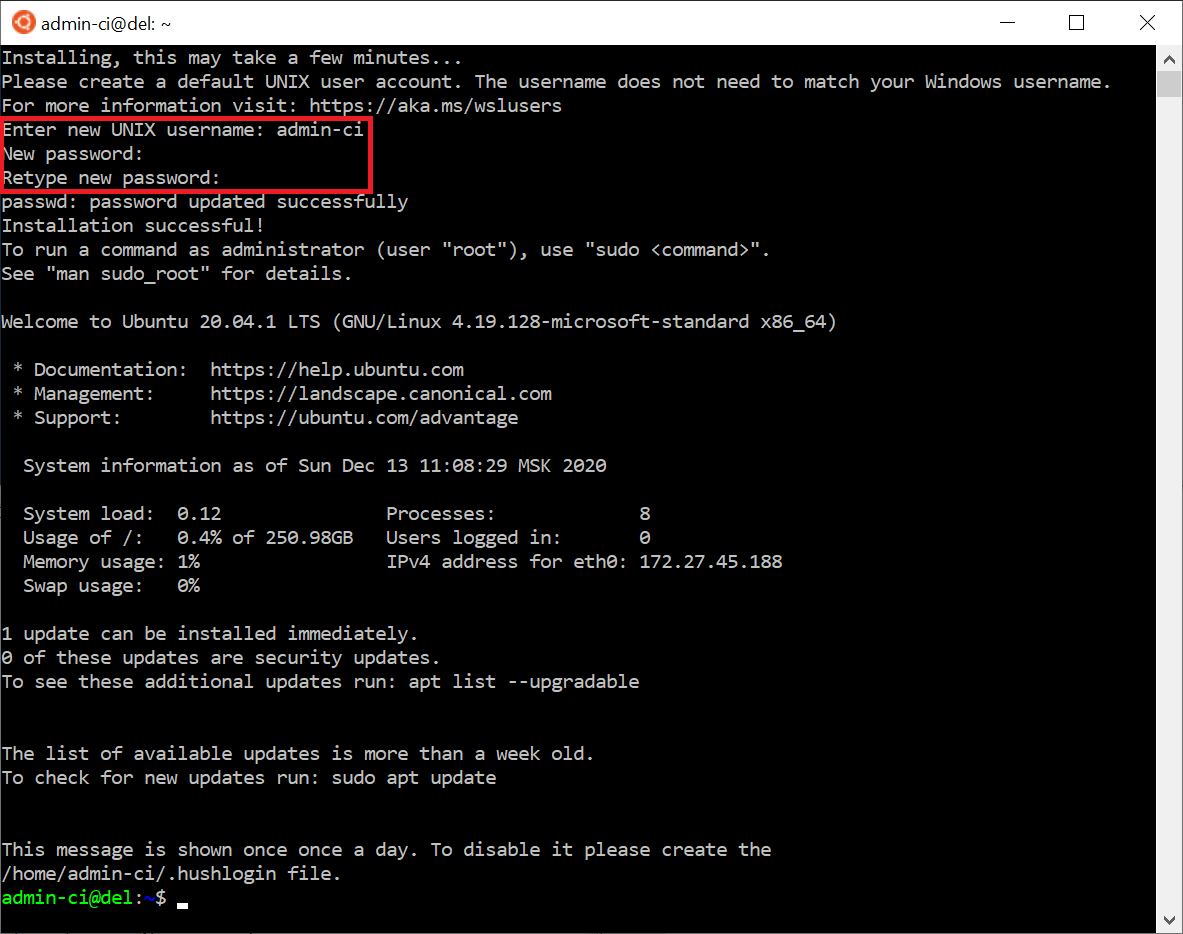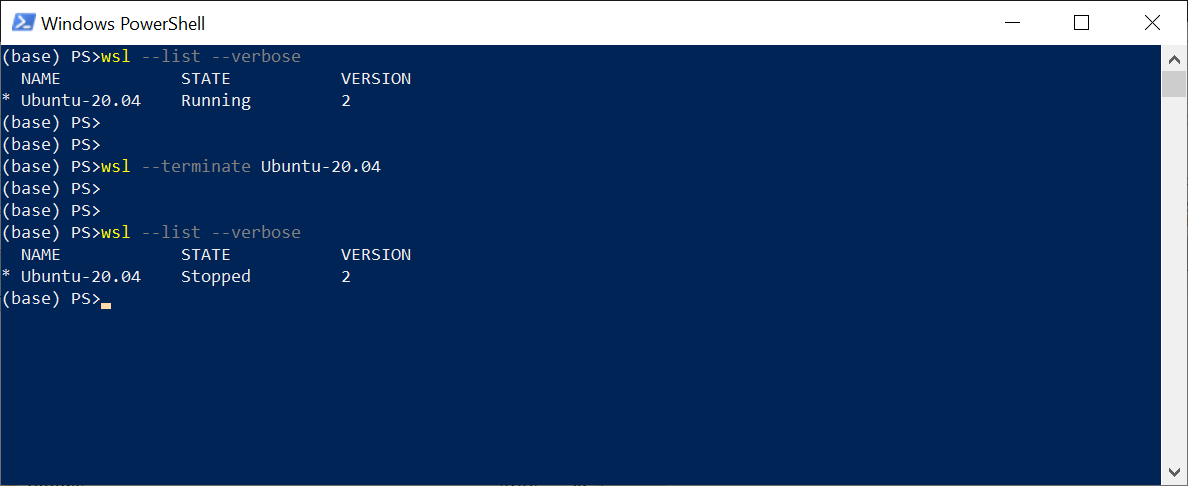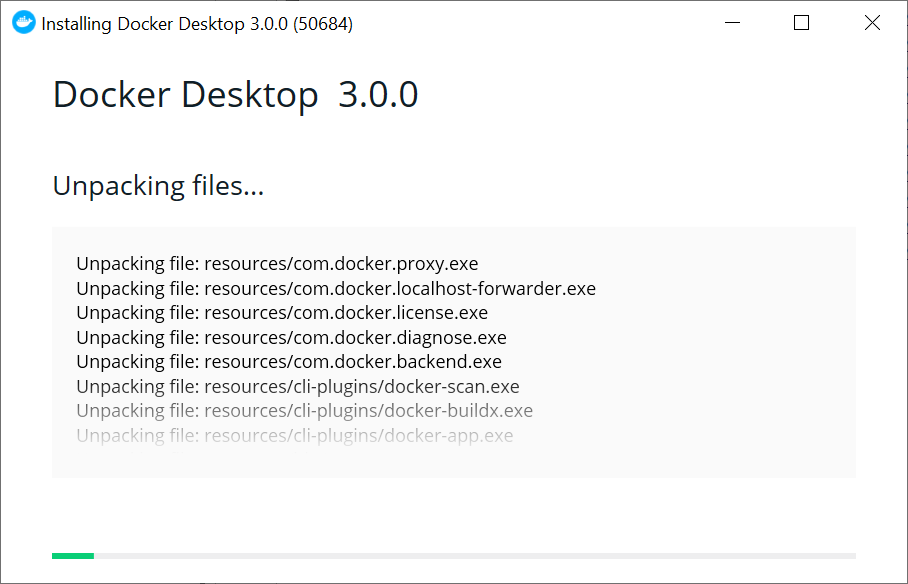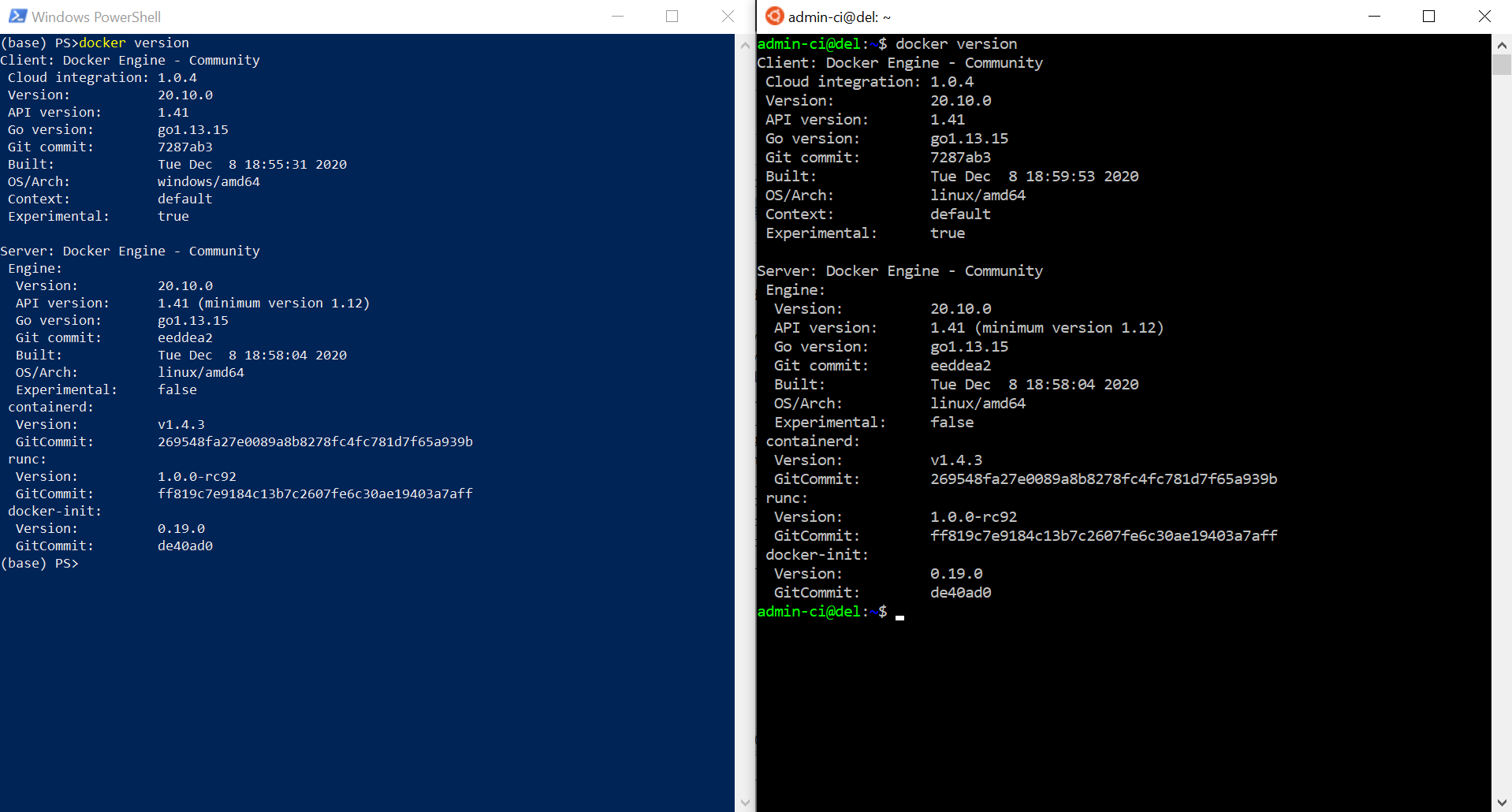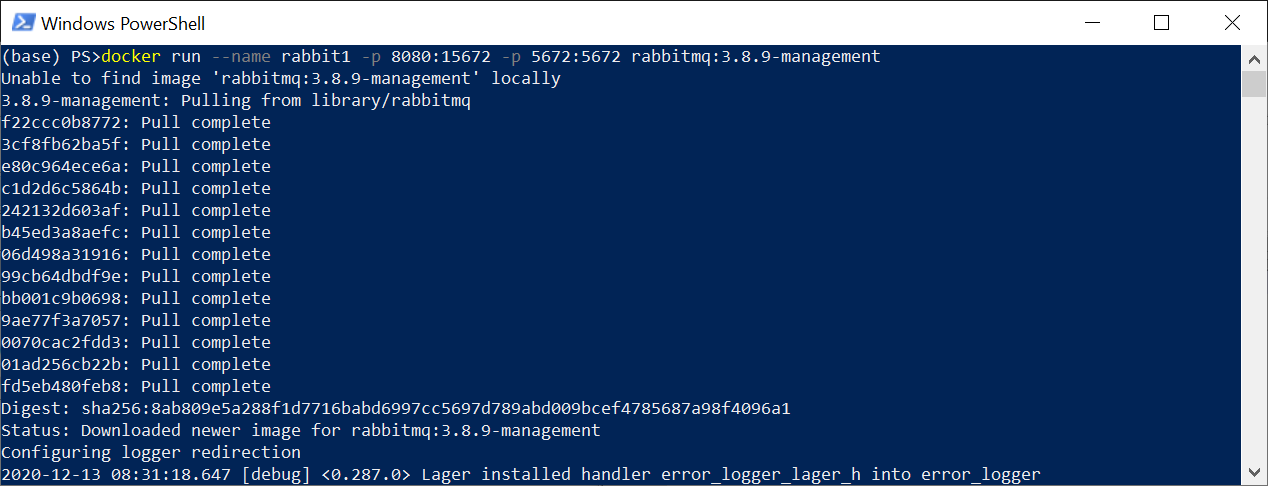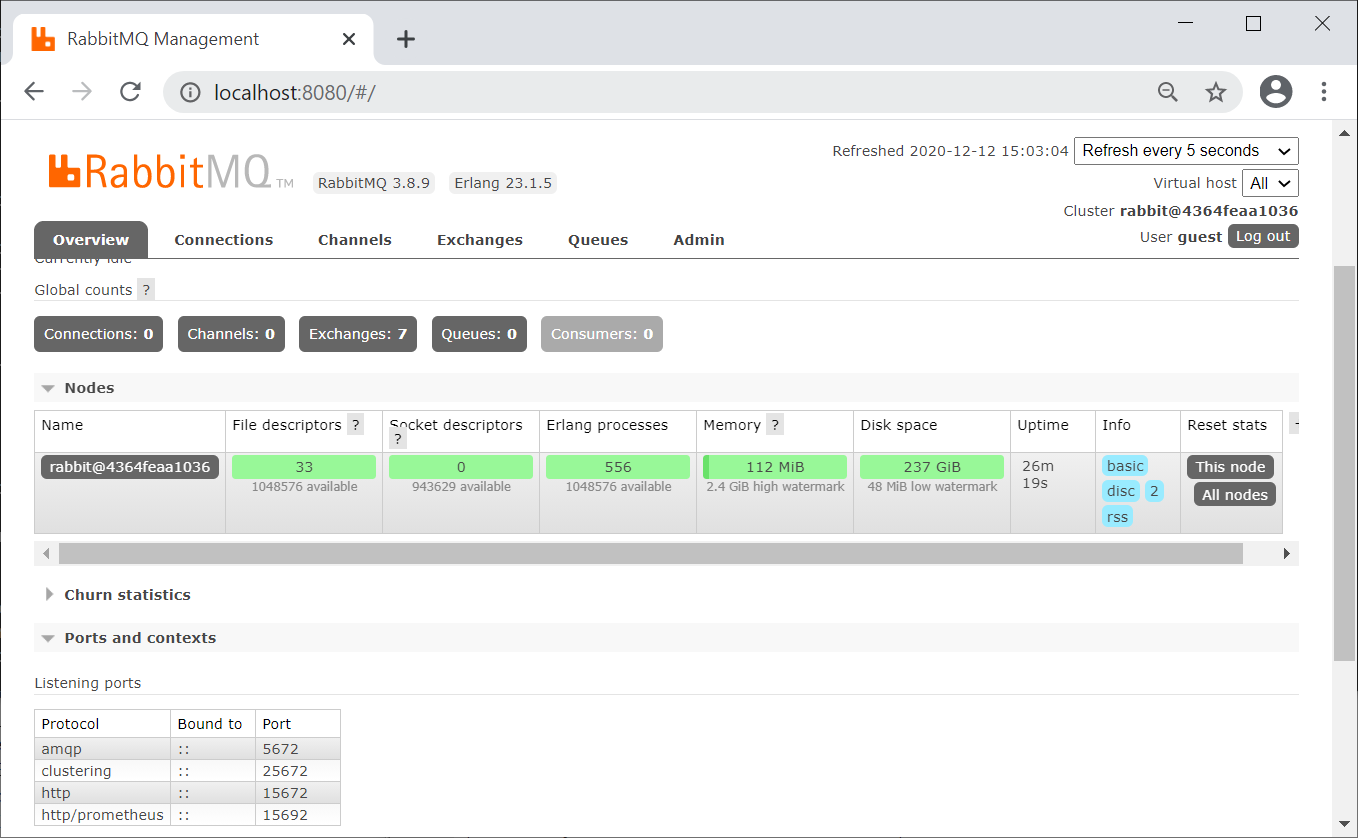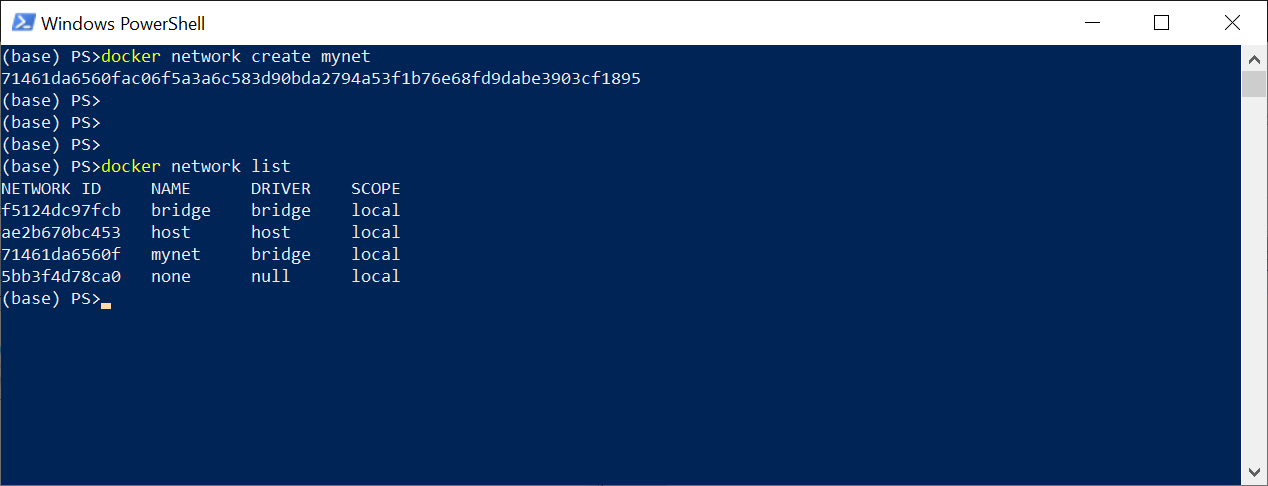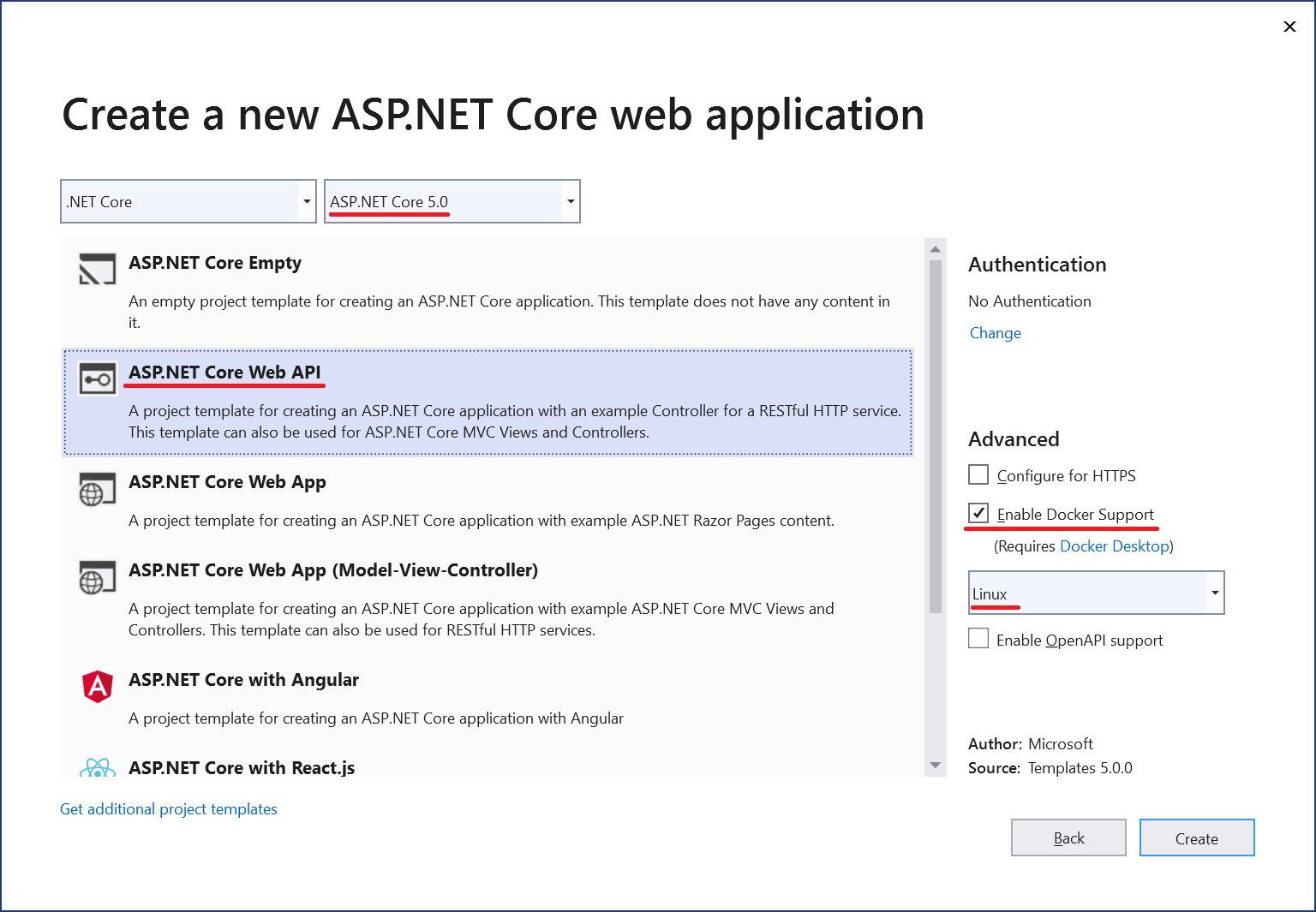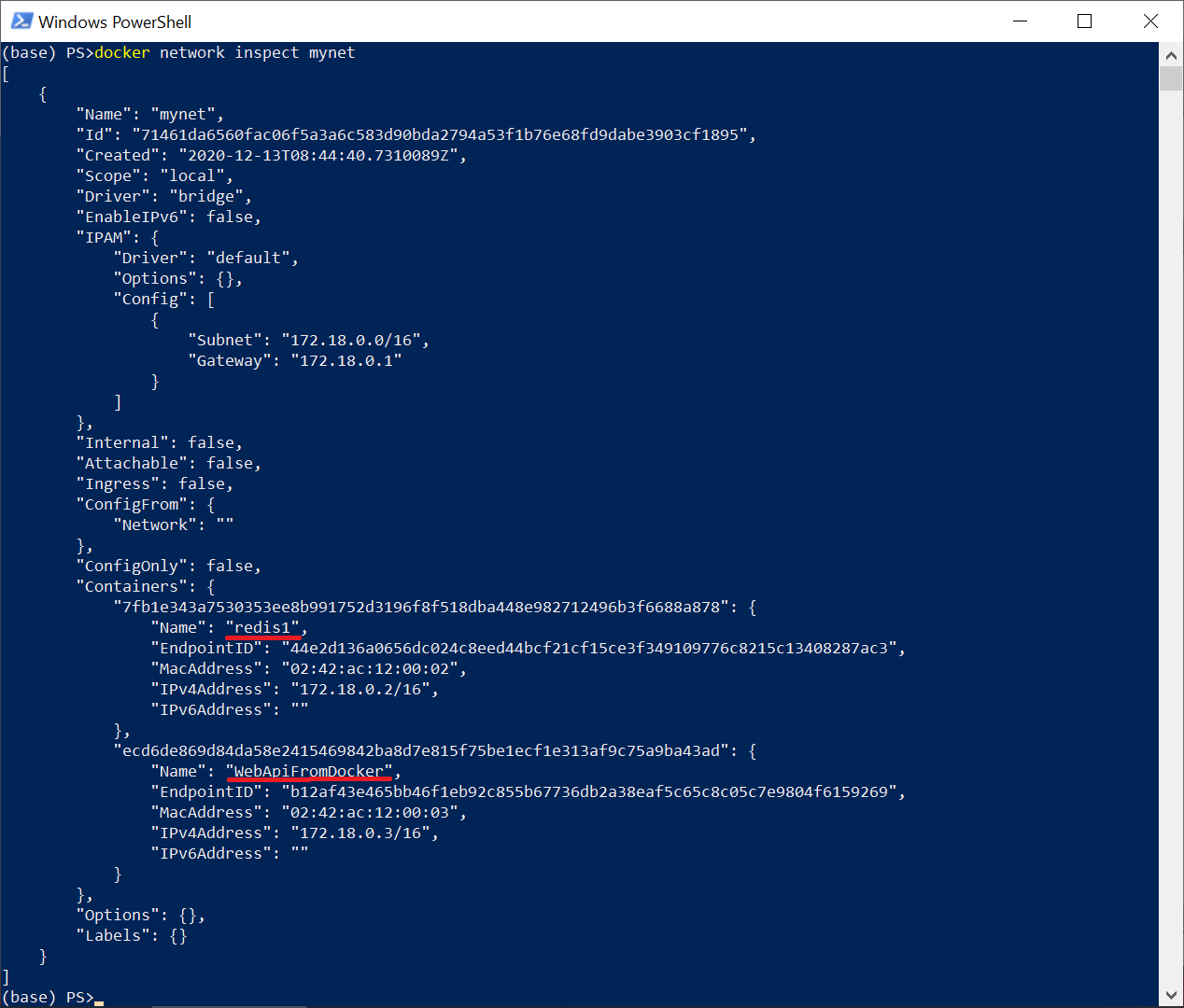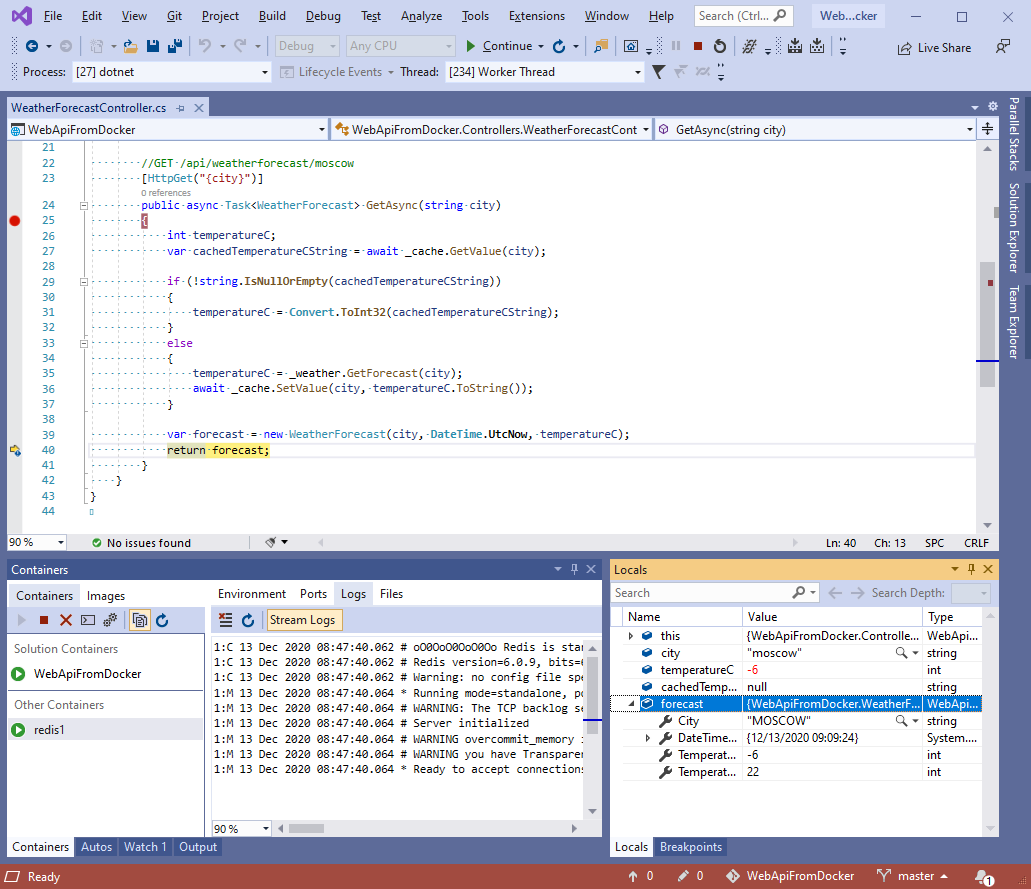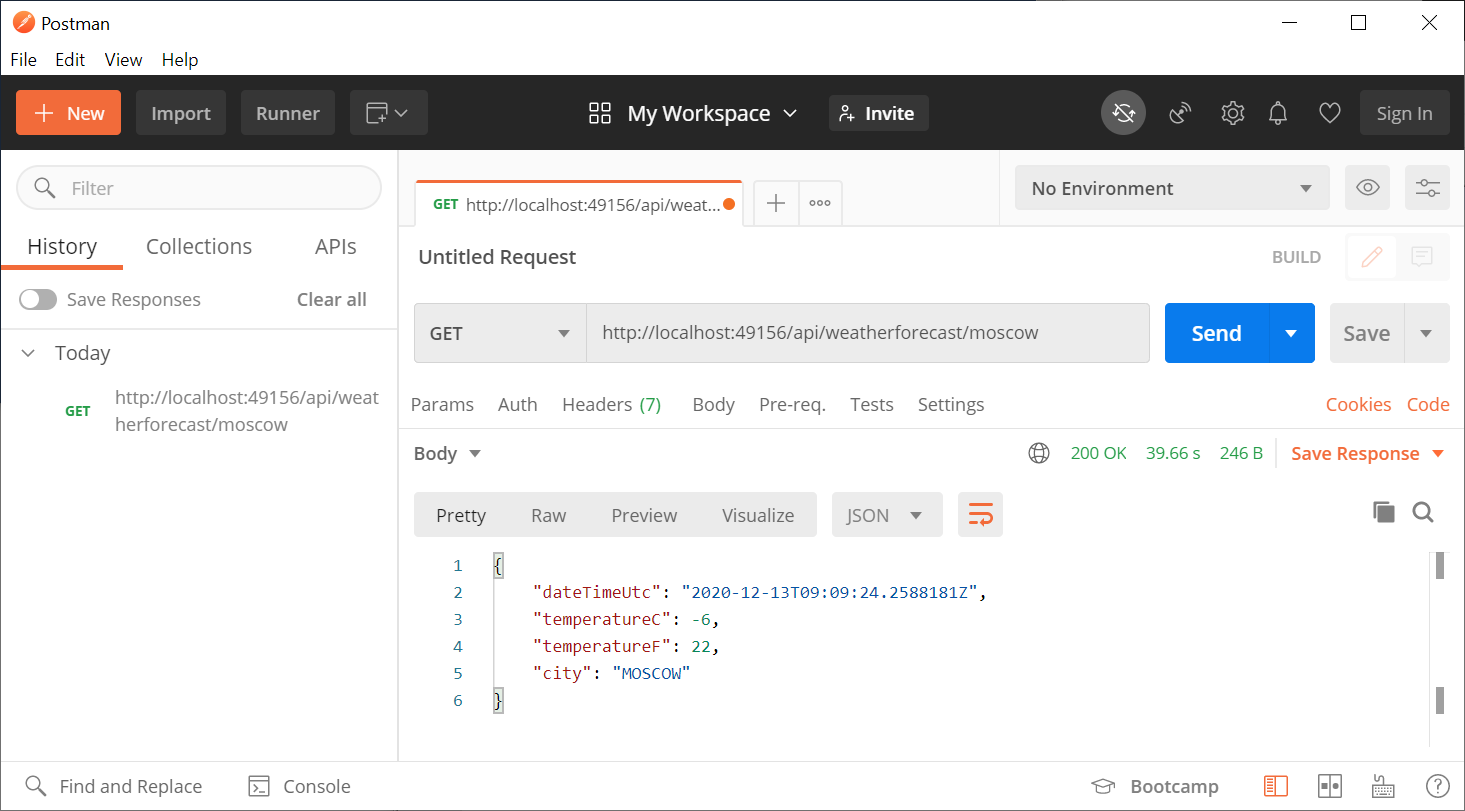How to install docker on windows 10
Install Docker on Windows 10
Have you previously installed Docker Toolbox, Docker Machine, or VirtualBox?
Docker for Windows now requires Microsoft’s Hyper-V. Once enabled, VirtualBox will no longer be able to run virtual machines (your VM images will still remain). You can still use docker-machine to manage remote hosts.
You have the option to import the default VM after installing Docker for Windows from the Settings menu in the System Tray.
Docker for Windows enables Hyper-V if necessary; this requires a reboot.
Requirements
Docker for Windows runs on 64-bit Windows 10 Pro, Enterprise, and Education; 1511 November update, Build 10586 or later. Docker plans to support more versions of Windows 10 in the future.
Installation
Verification
The whale in the status bar indicates a running (and accessible via terminal) Docker instance.
Windows prompts you for access every time Docker starts, allowing Docker to manage the Hyper-V VM’s. The first time Docker starts, you may need to provide the token from the Beta invitation email. When initialization completes, select About Docker from the notification area and verify you have the latest version.
Before you stop, let’s test a Dockerized webserver; from PowerShell or cmd.exe, run:
If your host does not already have it, Docker downloads nginx from Docker Hub and starts it. As soon as the download completes, point your web browser to http://docker to view the start page. You should see:
Welcome to nginx!
If you see this page, the nginx web server is successfully installed and working. Further configuration is required.
For online documentation and support please refer to nginx.org. Commercial support is available at nginx.com.
Thank you for using nginx.
Common Pitfalls
If your CPU does not support virtualization, or if you do not have a 64-bit CPU, you cannot run Docker locally.
Operating System
If you do not run a 64-bit version of Windows Windows 10 Pro, Enterprise, or Education; 1511 November update, Build 10586 or later, you cannot run Docker for Windows.
You can install Docker Toolbox if you have a 64-bit version of Windows 7 or later. Alternately, you do have the option to upgrade.
Next: Install Docker on Linux
Requirements and things to know before installing Docker for Linux.
By Runnable: The service that speeds up development by providing full-stack environments for every code branch.
Установка Docker в Windows
Docker Desktop для Windows — это нативное Windows-приложение, которое предоставляет среду для сборки и запуска контейнеризированных приложений. В его основе используется нативная Hyper-V виртуализация и сети, что является наиболее быстрым и стабильным вариантом для работы с Docker в Windows. Docker Desktop для Windows поддерживает как Windows-, так и Linux-контейнеры.
Что нужно знать перед установкой Docker в Windows?
Нам потребуется операционная система Windows 10 версии Корпоративная, Профессиональная или Образовательная. Также должны быть подключены компоненты Hyper-V и Windows Containers. Для работы с этими компонентами система должна выполнять следующие требования:
64-разрядный процессор с поддержкой преобразования адресов второго уровня (SLAT от англ. «Second Level Address Translation»).
Не менее 4 ГБ оперативной памяти.
Поддержка аппаратной виртуализации на уровне BIOS.
Есть два способа проверить, включена ли у вас виртуализация на уровне BIOS.
Способ №1: Посмотреть в «Диспетчер задач» > «Производительность» в поле «Виртуализация» должно быть значение «Включено» :
Microsoft Hyper-V является обязательным для установки Docker в Windows. Инсталлятор Docker для Windows предложит вам включить нужные компоненты и перезагрузить вашу машину.
Примечание: После включения компонента Hyper-V, VirtualBox перестанет работать, при этом все образы ваших виртуальных машин будут сохранены.
Docker для Windows включает в себя следующие компоненты:
Контейнеры и образы, созданные с помощью Docker Desktop для Windows, доступны всем пользователям машины, на которую он установлен, так как все пользователи используют одну и ту же виртуальную машину для сборки и запуска контейнеров.
Установка Docker в Windows 10
Существует два варианта установки Docker для Windows:
Приложение «Docker Toolbox for Windows».
Приложение «Docker for Windows».
Примечание: Обратите внимание, что Docker Toolbox для Windows является устаревшим решением, которым вы можете воспользоваться, если ваш компьютер не удовлетворяет требования, которые нужны для Docker для Windows. Детальнее об установке Docker Toolbox вы можете прочитать здесь.
В этом уроке мы будем устанавливать Docker через приложение «Docker for Windows», так как это решение является наиболее стабильным и надёжным. Итак, сначала нам нужно скачать установщик.
Примечание: Для Docker права администратора нужны для того, чтобы установить сетевые компоненты, создать ссылки на приложения Docker и управлять Hyper-V виртуальными машинами.
Чтобы запустить Docker Desktop, воспользуйтесь поиском в Windows:
Docker будет запущен тогда, когда иконка «кита» появится в системном трее:
Если иконка «кита» скрыта в системном трее, то нажмите на стрелку вверх, чтобы посмотреть все иконки. После установки Docker Desktop, вы также получите всплывающее уведомление о том, что Docker установлен и готов к работе:
Поздравляю! Вы успешно установили Docker Desktop на Windows.
Поделиться в социальных сетях:
Начало работы. Подготовка Windows для контейнеров Get started: Prep Windows for containers
Из этого руководства вы узнаете, как выполнить следующие задачи: This tutorial describes how to:
Предварительные требования Prerequisites
Windows Server Windows Server
Чтобы запустить контейнеры в Windows Server, вам нужен физический сервер или виртуальная машина под управлением Windows Server (Semi-Annual Channel), Windows Server 2019 или Windows Server 2016. To run containers on Windows Server, you need a physical server or virtual machine running Windows Server (Semi-Annual Channel), Windows Server 2019, or Windows Server 2016.
Windows 10 Windows 10
Для запуска контейнеров в Windows 10 необходимо следующее: To run containers on Windows 10, you need the following:
Начиная с Windows 10 с обновлением от октября 2018 г. мы не запрещаем пользователям запускать контейнер Windows в режиме изоляции процессов в Windows 10 Корпоративная или Профессиональная для целей разработки и тестирования. Starting with the Windows 10 October Update 2018, we no longer disallow users from running a Windows container in process-isolation mode on Windows 10 Enterprise or Professional for dev/test purposes. Дополнительные сведения см. в разделе вопросов и ответов. See the FAQ to learn more.
Контейнеры Windows Server по умолчанию используют изоляцию Hyper-V в Windows 10, чтобы разработчики получили ту же версию ядра и ту же конфигурацию, что и в рабочей среде. Windows Server Containers use Hyper-V isolation by default on Windows 10 in order to provide developers with the same kernel version and configuration that will be used in production. Дополнительные сведения об изоляции Hyper-V см. в разделе документации с описанием концепций. Learn more about Hyper-V isolation in the Concepts area of our docs.
Установка Docker Install Docker
Первым шагом станет установка Docker. Это нужно для работы с контейнерами Windows. The first step is to install Docker, which is required for working with Windows containers. Docker предоставляет стандартную среду выполнения для контейнеров, а также основной API и интерфейс командной строки (CLI). Docker provides a standard runtime environment for containers, with a common API and command-line interface (CLI).
Дополнительные сведения о конфигурации см. в статье Подсистема Docker в Windows. For more configuration details, see Docker Engine on Windows.
Чтобы установить Docker в Windows Server, можно использовать модуль PowerShell поставщика OneGet, который опубликован корпорацией Майкрософт, под именем DockerMicrosoftProvider. To install Docker on Windows Server, you can use a OneGet provider PowerShell module published by Microsoft called the DockerMicrosoftProvider. Этот поставщик включает поддержку контейнеров в Windows, а также устанавливает подсистему и клиент Docker. This provider enables the containers feature in Windows and installs the Docker engine and client. Вот как это сделать. Here’s how:
Откройте сеанс PowerShell с повышенными привилегиями и установите поставщик Docker-Microsoft PackageManagement из коллекции PowerShell. Open an elevated PowerShell session and install the Docker-Microsoft PackageManagement Provider from the PowerShell Gallery.
Если будет предложено установить поставщик NuGet, введите Y и установите его. If you’re prompted to install the NuGet provider, type Y to install it as well.
С помощью модуля PackageManagement PowerShell установите последнюю версию Docker. Use the PackageManagement PowerShell module to install the latest version of Docker.
После установки перезагрузите компьютер. After the installation completes, restart the computer.
Если позже вам потребуется обновить Docker, выполните следующие действия: If you want to update Docker later:
Windows Admin Center; Windows Admin Center
Вы можете использовать Windows Admin Center для корректной настройки компьютера Windows Server в качестве узла контейнера. You can use Windows Admin Center to properly set up a Windows Server machine as a container host. Чтобы начать работу, убедитесь, что в вашем экземпляре Windows Admin Center установлена последняя версия расширения «Контейнеры». To get started, ensure you have the latest Containers extension installed on your Windows Admin Center instance. Дополнительные сведения об установке и настройке расширений см. в документации по Windows Admin Center. For more information on how to install and configure extensions, check out the Windows Admin Center documentation. Установив расширение «Контейнеры», выберите компьютер Windows Server, который нужно настроить, и выберите вариант «Контейнеры»: With the Containers extension installed, target the Windows Server machine you want to configure and select the Containers option:
Нажмите кнопку Установить. Click the Install button. Windows Admin Center запустит настройку Windows Server и Docker в фоновом режиме. Windows Admin Center will start the configuration of Windows Server and Docker in the background. После завершения процесса можно обновить страницу и просмотреть другие функции расширения «Контейнеры». After the process is complete, you can refresh the page and see the other functionalities of the Containers extension.
Вы можете установить Docker в Windows 10 Профессиональная и Корпоративная, выполнив описанные ниже действия. You can install Docker on Windows 10 Professional and Enterprise editions by using the following steps.
Скачайте и установите Docker Desktop, создав бесплатную учетную запись Docker, если у вас ее нет. Download and install Docker Desktop, creating a free Docker account if you don’t have one already. Дополнительные сведения см. в документации по Docker. For more details, see the Docker documentation.
Во время установки выберите контейнеры Windows в качестве типа контейнеров по умолчанию. During installation, set the default container type to Windows containers. Чтобы переключиться после установки, можно использовать элемент Docker в области уведомлений Windows (как показано ниже) либо следующую команду в командной строке PowerShell: To switch after installation completes, you can use either the Docker item in the Windows system tray (as shown below), or the following command in a PowerShell prompt:
Дальнейшие действия Next steps
Теперь, когда ваша среда полностью настроена, перейдите по приведенной ниже ссылке, чтобы узнать, как запустить контейнер. Now that your environment has been configured correctly, follow the link to learn how to run a container.
Install Docker Desktop on Windows
Estimated reading time: 6 minutes
Docker Desktop for Windows is the Community version of Docker for Microsoft Windows. You can download Docker Desktop for Windows from Docker Hub.
By downloading Docker Desktop, you agree to the terms of the Docker Software End User License Agreement and the Docker Data Processing Agreement.
System requirements
Your Windows machine must meet the following requirements to successfully install Docker Desktop.
Hyper-V backend and Windows containers
Windows 10 64-bit: Pro, Enterprise, or Education (Build 17134 or higher).
The following hardware prerequisites are required to successfully run Client Hyper-V on Windows 10:
WSL 2 backend
The following hardware prerequisites are required to successfully run WSL 2 on Windows 10:
Docker supports Docker Desktop on Windows for those versions of Windows 10 that are still within Microsoft’s servicing timeline.
What’s included in the installer
The Docker Desktop installation includes Docker Engine, Docker CLI client, Docker Compose, Notary, Kubernetes, and Credential Helper.
Containers and images created with Docker Desktop are shared between all user accounts on machines where it is installed. This is because all Windows accounts use the same VM to build and run containers. Note that it is not possible to share containers and images between user accounts when using the Docker Desktop WSL 2 backend.
Nested virtualization scenarios, such as running Docker Desktop on a VMWare or Parallels instance might work, but there are no guarantees. For more information, see Running Docker Desktop in nested virtualization scenarios.
About Windows containers
Looking for information on using Windows containers?
Install Docker Desktop on Windows
Double-click Docker Desktop Installer.exe to run the installer.
If you haven’t already downloaded the installer ( Docker Desktop Installer.exe ), you can get it from Docker Hub. It typically downloads to your Downloads folder, or you can run it from the recent downloads bar at the bottom of your web browser.
When prompted, ensure the Enable Hyper-V Windows Features or the Install required Windows components for WSL 2 option is selected on the Configuration page.
Follow the instructions on the installation wizard to authorize the installer and proceed with the install.
When the installation is successful, click Close to complete the installation process.
If your admin account is different to your user account, you must add the user to the docker-users group. Run Computer Management as an administrator and navigate to Local Users and Groups > Groups > docker-users. Right-click to add the user to the group. Log out and log back in for the changes to take effect.
Start Docker Desktop
Docker Desktop does not start automatically after installation. To start Docker Desktop, search for Docker, and select Docker Desktop in the search results.
When the whale icon in the status bar stays steady, Docker Desktop is up-and-running, and is accessible from any terminal window.
If the whale icon is hidden in the Notifications area, click the up arrow on the taskbar to show it. To learn more, see Docker Settings.
When the initialization is complete, Docker Desktop launches the onboarding tutorial. The tutorial includes a simple exercise to build an example Docker image, run it as a container, push and save the image to Docker Hub.
Congratulations! You are now successfully running Docker Desktop on Windows.
If you would like to rerun the tutorial, go to the Docker Desktop menu and select Learn.
Automatic updates
Starting with Docker Desktop 3.0.0, updates to Docker Desktop will be available automatically as delta updates from the previous version.
When an update is available, Docker Desktop displays an icon to indicate the availability of a newer version. Whenever convenient, you can start the download of the update in the background.
When the download finishes, all you need to do is to click Update and restart from the Docker menu. This installs the latest update and restarts Docker Desktop for the changes to take effect.
Uninstall Docker Desktop
To uninstall Docker Desktop from your Windows machine:
Uninstalling Docker Desktop destroys Docker containers, images, volumes, and other Docker related data local to the machine, and removes the files generated by the application. Refer to the back up and restore data section to learn how to preserve important data before uninstalling.
Еще один способ установки и использования Docker в Windows 10
Чтобы все описанные ниже действия были успешно выполнены, потребуется 64-разрядная система с версией не меньше 2004 и сборкой не меньше 18362. Проверим версию и номер сборки, выполнив в PowerShell команду winver
Если версия ниже требуемой, то необходимо произвести обновление и только после этого идти дальше
Установка WSL 2
Сначала включим компонент Windows Subsystem for Linux (WSL). Для этого запустим PowerShell с правами администратора и выполним первую команду
Выполним следующую команду
Для целей этой статьи это необязательно, но установим дистрибутив Linux через Microsoft Store, например, Ubuntu 20.04 LTS
При первом запуске установленного дистрибутива введем имя пользователя и пароль
Файловая система запущенного дистрибутива Linux будет смонтирована по этому пути \\wsl$
Установка Docker
Скачаем Docker Desktop для Windows и установим, следуя простым инструкциям
После установки запустим приложение Docker Desktop и установим интеграцию Docker с дистрибутивом Linux (WSL 2)
Теперь отправлять команды Docker можно как через PowerShell, так и через Bash. Выполним команду docker version
Запуск контейнеров
Чтобы убедиться, что Docker правильно установлен и работает должным образом, запустим простой контейнер busybox, который всего лишь выведет в консоль переданное сообщение и завершит свое выполнение
Хорошо. Давайте сделаем что-то более интересное. Например, запустим контейнер rabbitmq
Разберем выполненную команду:
Теперь мы можем извне контейнера взаимодействовать с сервером RabbitMQ через порт 5672 и получить доступ к управлению из браузера через порт 8080
Для нашего примера нам понадобится отдельная сеть, т.к. мы запустим целых два контейнера, которые будут взаимодействовать между собой. На самом деле все запускаемые контейнеры по умолчанию попадают в уже существующую сеть с именем bridge, но т.к. в своей сети мы без лишних проблем сможешь обращаться из одного контейнера к другому прямо по имени, создадим сеть с названием mynet типа bridge
Далее с помощью Visual Studio 2019 создадим новый проект ASP.NET Core Web API, который будет использован для демонстрации отладки
Добавим для взаимодействия с Redis пакет StackExchange.Redis через Package Manager Console
Мы не будем акцентироваться на правильности и красоте дизайна, а быстро создадим рабочий пример
Добавим в проект файл RandomWeatherService.cs, где будет находится служба для выдачи не очень точного прогноза
Добавим файл RedisRepository.cs, где будет находится служба кеширования сформированных прогнозов
Зарегистрируем созданные службы в классе Startup
И наконец, изменим созданный автоматически единственный контроллер WeatherForecastController следующим образом
Помимо прочего в проект автоматически был добавлен файл Dockerfile с инструкциями для Docker. Оставим его без изменений
В результате получим следующую структуру проекта
Если по какой-то невероятной причине Вам понадобятся исходники, то они здесь
Запустим наше приложение в контейнере под отладкой
После того как контейнер будет запущен, также подключим его к сети mynet
После убедимся, что все необходимые контейнеры находятся в одной сети
Далее установим Breakpoint в единственном методе контроллера и пошлем запрос через Postman, или через любой браузер
Кстати, используемый порт в Вашем случае может отличаться и его можно посмотреть в окне Containers
Результат в окне Postman
Дополнительно убедимся, что значение зафиксировано в redis, подключившись с помощью консоли redis-cli











